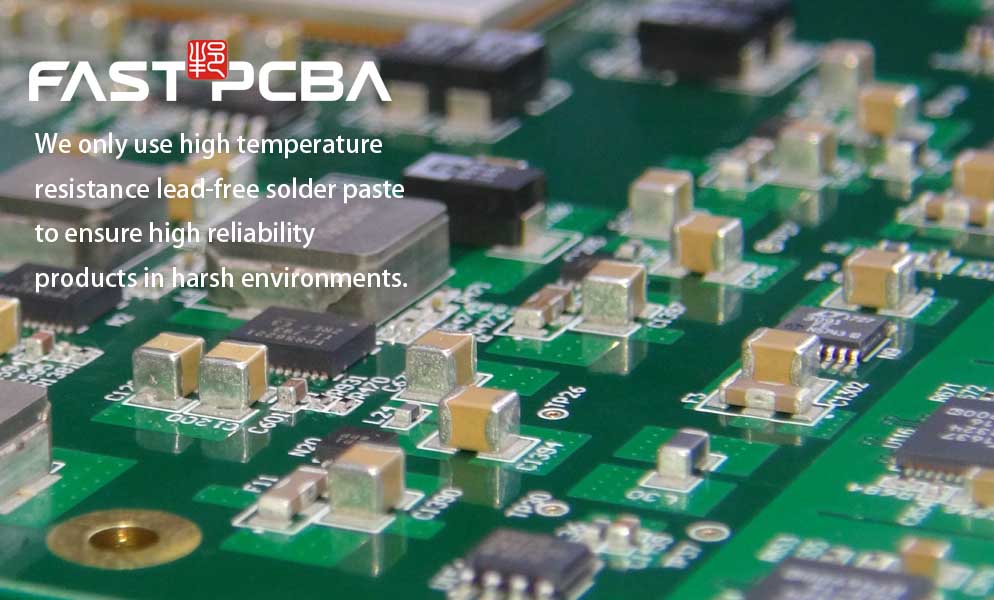About us
FASTPCBA Co.,Ltd
-
 Building 1, Senyang Electronic Technology Park, Guangming High-tech Park, Yutang Street, Guangming District, Shenzhen City.
Building 1, Senyang Electronic Technology Park, Guangming High-tech Park, Yutang Street, Guangming District, Shenzhen City.
-
 F:86-13418481618
F:86-13418481618
-
 pcba13@fastpcba.cn
pcba13@fastpcba.cn
 date:2019-11-14 11:26:51
date:2019-11-14 11:26:51
Wave soldering process parameter setting requirements
Frequently debugging wave soldering process parameters include component surface preheating temperature, soldering surface preheating temperature, soldering temperature, contact time (also called soldering time); some parameters are usually not debugged, such as flux spray amount, transfer angle, the pre-heating temperature of the tin wave height component surface, the preheating temperature of the soldering surface and the soldering temperature all refer to the actual temperature on the PCBA, not the setting temperature of the machine. As with the reflow soldering, it is necessary to confirm by measurement that the wave soldering is different from the reflow soldering, solder joint heating is conducted by molten tin waves, similar to flame iron welding.

Compared with reflow soldering, the process parameters are relatively large, and the results of the process, such as flux volatilization, component deformation, soldering quality, etc., can be observed in real time on site, so most factories often not measure the process parameters or temperature profiles, it is determined empirically. The reason why this can be done is because the heating method of wave soldering is conduction heating. The temperature of the solder bath determines the maximum temperature of soldering (soldering point), which is limited by the heat resistance of the PCB. Generally, the temperature of the tin bath is set to a fixed value. For a given wave soldering machine, the tin bath structure is fixed and the width of the tin wave is fixed, so the actual soldering (joints) temperature can be transmitted through the PCBA.
Process parameter setting requirements
1) Component surface preheating temperature
The component surface preheating temperature generally represents the heat dissipation efficiency of the metallized holes. The preheating temperature is high, and the temperature of the metallized holes or solder joints during welding is relatively high, and the tin penetration is better. For the multi-layer pcb board, the inner layer of the ground plane is relatively more. If the number of layers connected to the hole wall is relatively large, the wall of the hole is quickly dissipated, and the preheating temperature of the component surface can be appropriately increased. However, it is necessary to ensure that the component is not damage, such as LED, film capacitor, electrolytic capacitor, etc., does not deform, does not damage the surface temperature of the component surface should be controlled according to the size, thickness, number of layers, component size or quantity the PCB, the general range is 90 ~ 130 ° C
2) Welding surface preheating temperature
The preheating temperature of the soldering surface is related to the temperature of the solder joint; the volatilization of the flux solvent and the removal of the oxide on the soldering surface, usually the flux volatilization is relatively thorough but the tackiness is appropriate. If the solvent volatilization is insufficient, the solder ball is easily caused. Bad soldering, etc.: If it is completely volatilized, the first wave may be completely washed out during wave soldering, which may cause problems such as bridging.
3) Welding temperature
The soldering temperature is mainly determined by the solder alloy. Generally, it should be higher than the melting point of the solder by 40 ° C or higher, not over 270 ° C. If the temperature is too low, the fluidity of the molten solder is relatively poor; too high temperature will bring more tin dross and cause more serious PCB bending deformation. . usually:
For 63Sn37Pb, 250 ± 5 ° C;
For Sn0.7Cu and SnAgCu305, 265 ±5°C
Tests show that the effect of 260-270 °C on the bridging rate is not obvious, but the effect on the tin penetration rate is relatively large.
4) Contact time
The contact time determines the actual temperature of the solder joint. The higher the temperature, the better the filling of the hole, but the more severe the deformation of the pcb board; usually 3-5s is selected. For the lead-free process, too high temperature will lead to the copper plate erosion even disappear
 Building 1, Senyang Electronic Technology Park, Guangming High-tech Park, Yutang Street, Guangming District, Shenzhen City.
Building 1, Senyang Electronic Technology Park, Guangming High-tech Park, Yutang Street, Guangming District, Shenzhen City.
 F:86-13418481618
F:86-13418481618
 pcba13@fastpcba.cn
pcba13@fastpcba.cn